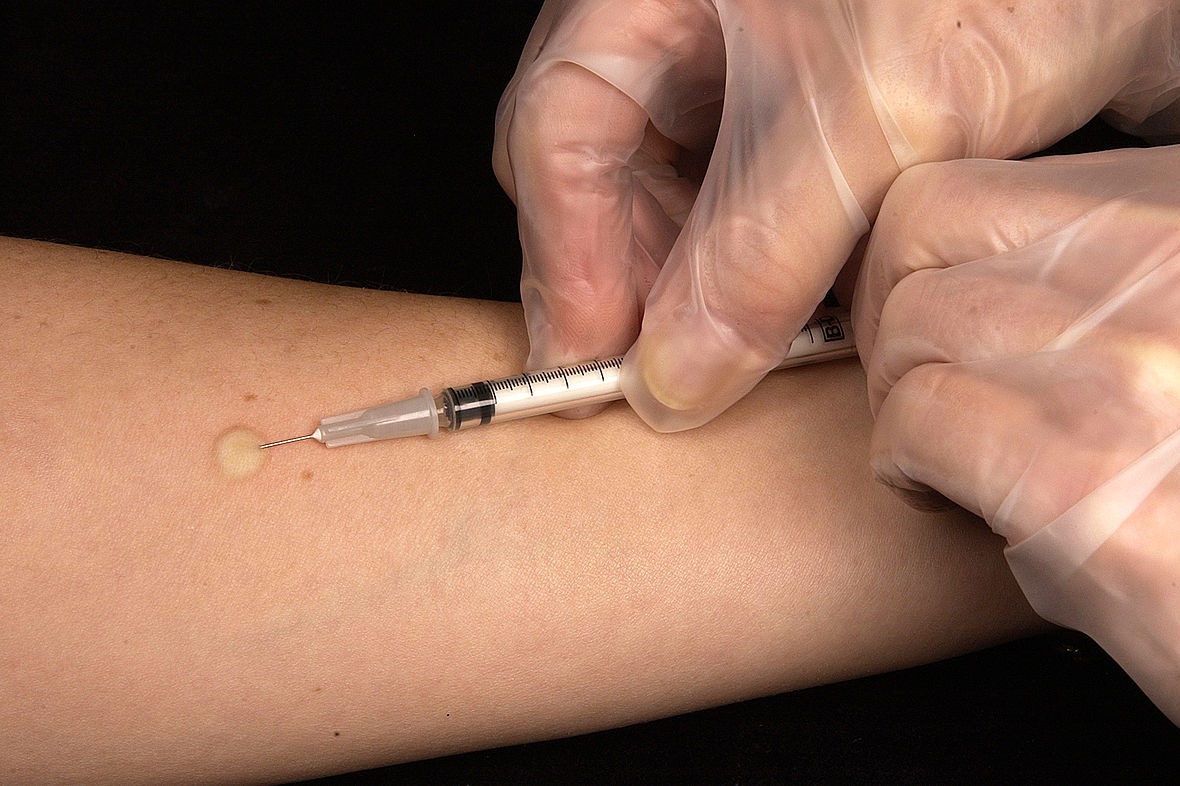
Tuberculin: skin test in screening for tuberculosis (TB)
The tuberculin skin test is considered the primary means of screening for tuberculosis (TB) infection
Tuberculin is a protein fraction of the tubercle bacillus that provokes a delayed immune response in the body.
When the tuberculin test is performed
The tuberculin test is performed whenever one wants to know whether there has been previous contact with the Mycobacterium Tuberculosis, responsible for tuberculosis: a positive reaction indicates that the test subject has had previous contact with the tuberculosis bacterium, which is not always the same as being ill.
It is usually considered appropriate as an initial screening test in asymptomatic individuals and is recommended for
- those who have spent time with a person with TB in the infectious phase
- those who live in places and countries where TB is widespread
- intravenous drug users, the immunocompromised and those infected with HIV.
As part of special prevention programmes, the test is also performed on primary and secondary school pupils and hospital staff.
How the tuberculin test is performed
After the skin has been thoroughly disinfected, 1/10 ml of tuberculin is injected into the dermis of the volar surface of the forearm using an insulin syringe and a very fine needle.
The injection, which is not painful, causes a pomphoid sensation on the skin that should not be rubbed or covered with a plaster to avoid possible skin allergies that would alter the test, and which slowly reabsorbs (intradermal Mantoux).
In addition, the inoculation area should not be washed or scratched
In addition to the Mantoux intradermoreaction, a pre-packaged test called the ‘tine test’ can also be used, which consists of a plastic disc with four tuberculin-soaked tips that is applied like a stamp in the same arm area as the Mantoux intradermoreaction.
The test result awaits the skin response, which manifests itself 48/72 hours after inoculation and, in the case of a positive result, causes an area of hardened skin, papule, surrounded by erythema of varying size.
Read Also
Emergency Live Even More…Live: Download The New Free App Of Your Newspaper For IOS And Android
Who Gets Tuberculosis? Harvard Medical School Study On Immune Cell Deficiency
Médecins Sans Frontières MSF, New Strategies At Work In Eleventh Ebola Outbreak In DRC
MSF: Lifesaving TB (Tubercolosis) Medicines Still Out Of Reach For Children In High-Burden Countries
Tuberculosis, Symptoms And Transmission


